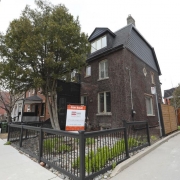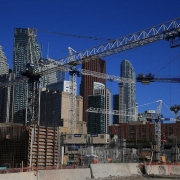The housing market in Canada is currently grappling with a significant and unprecedented challenge – a widening gap between population growth and housing completions. This growing disparity has far-reaching implications, impacting economic, physical, and mental well-being, and posing a threat to Canada’s status as a prosperous and upwardly mobile society.
Understanding the Housing Disparity
Recent research, including a study by the Fraser Institute, has revealed the severity of the housing shortage in Canada. The study compared annual population growth with housing completions between 1972 and 2022, uncovering that the gap between the number of homes needed and the number being built has never been wider. For instance, from 2018 to 2022, Canada’s population grew by an average of 553,568 people annually, while only 205,762 new homes were built each year on average during the same period. This imbalance has led to soaring housing costs and affordability challenges for many Canadians, with the gap between the number of homes produced and the number needed at a 50-year high
Impact of Population Growth
The surge in population, largely driven by immigration, has significantly outpaced the rate of housing completions, further exacerbating the housing shortage. The study revealed that the influx of new residents has led to a surge in housing demand, making it increasingly difficult for the housing market to keep pace with the growing population. This imbalance has led to a situation where housing completions have equaled less than 40% of population growth over the last five years, underscoring the magnitude of the housing shortage

Policy Implications and Solutions
The widening gap between housing demand and supply has prompted calls for urgent policy interventions to address the housing crisis. The Fraser Institute’s research emphasizes that unless meaningful efforts are made to close this gap, affordable housing will remain out of reach for an ever-greater share of the population, with detrimental effects on living standards across the country. The study also highlights the need to streamline regulations and increase the supply of housing to bridge the widening gap between demand and supply. Easing zoning laws and facilitating new construction are cited as potential solutions to alleviate the acute shortage of housing in Canada
In conclusion, Canada’s growing housing gap poses a significant threat to the country’s economic and social well-being. The disparity between population growth and housing completions has reached unprecedented levels, leading to soaring housing costs and affordability challenges. Urgent policy measures and increased housing supply are essential to bridge this gap and ensure that affordable housing remains accessible to the population.
sources:
The Star
Yahoo
Fraser Institute
Fraser Institute
Fraser Institute
Story’s
Yahoo Finance
Real Economy
True North








 Maziar Moini, Broker of Record - Home Leader Realty Inc.
300 Richmond St. W., #300, Toronto, ON M5V-1X2
Maziar Moini, Broker of Record - Home Leader Realty Inc.
300 Richmond St. W., #300, Toronto, ON M5V-1X2



